There is one fullback in the starting fifteen players on a Rugby Union team. They wear the number 15 jersey.
This article covers the role of fullbacks in attack and defence.
We have a separate article on fullbacks in rugby league.
What Are Fullbacks In Rugby?
The two wingers in a starting rugby team are usually positioned closest to the left and right touchlines.
In attack, their teammates try to tie up defenders in midfield to pass to wingers out wide for attacking opportunities.
The diagram below shows where the fullback is typically positioned at the start of a scrum.
As you can see, the fullback stands at the deepest position on the field.
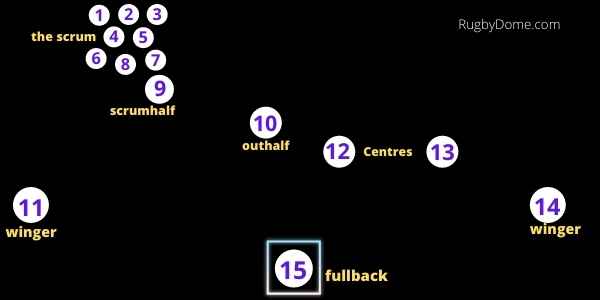
Origins of the name
The players numbered nine to fifteen are known as backs.
The name “fullback” is given because the 15 is the back who is fully in a backfield position.
What Do Fullbacks Do?
Fullbacks are very noticeable in a game of rugby where the opposition team choose the kick the ball a lot.
Let’s start with this part of the role: defending the backfield
Defending the backfield
Because fullbacks stand in the deepest position on the field, one of their roles is to track long high kicks and catch the ball securely.
The fullback has the full width of the field to cover, and nothing delights an outhalf more than kicking a ball long into empty space in a corner.
If the fullback is over the other side of the field and isn’t in a position to catch the ball, the opposition kicker can gain a lot of territory.
As rugby is a competition for territory, a big part of the role of fullback is to anticipate where the ball is going to go.
The player is constantly scanning the opposition. Has the opposition outhalf given a nod to a winger that the ball will be launched long and high down the right touchline?
By the time the outhalf has dropped the ball to his foot, the fullback is already moving to where he predicts the ball will land.
A good fullback can prevent the opposition outhalf or other players from kicking the ball in the first place!
Catching high balls
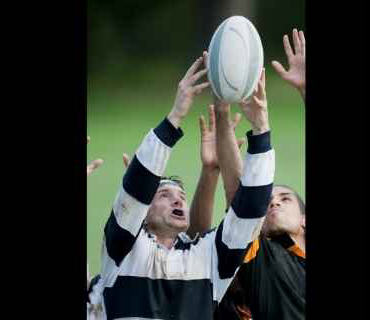
When opposition outhalves launch a high ball downfield, one of their wingers is usually racing forward to try to catch it.
The defending fullback is also moving into a position to catch this ball.
One of the most exciting parts of rugby is when an attacking and defending player both jump to compete for the ball.
The fullback isn’t the only defender who tries to catch long high balls. Sometimes a winger also takes this role.
But fullbacks compete for most high balls. This is a crucial part of the role and the players constantly train for success.
Last defender
When the opposition launches a flowing attack by passing the ball across the field, their goal is often to get the ball to their winger with a bit of space to race down the touchline.
The fullback’s teammates have formed a defensive line straight across the pitch. But the fullback stands further back as the last line of defence.
As there is only one fullback, the player must have enough pace to sweep from one side of the field to the other to make last-ditch tackles.
So, don’t be surprised when I tell you that fullbacks are often the fastest players on the field. Yes, faster even than the wingers.
This chart shows measurements taken at the 2019 Rugby World Cup. You can get more details in our article on rugby player speed.
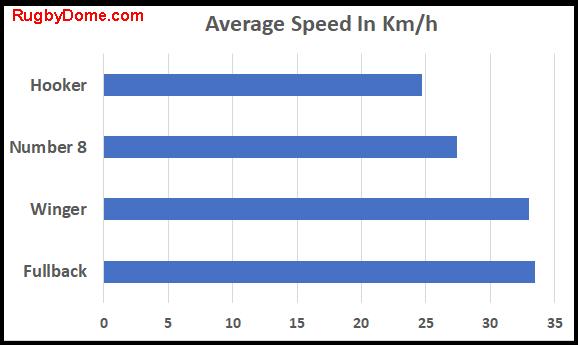
Joining the line of attack
When the attacking team is going through several phases of play, watch how their fullback moves across the backfield.
The fullback is watching for an opportunity to race forward to join the attack line as an extra player.
Here’s a simplified example from a scrum. It’s a planned play where the outside centre (13) has shifted to a wider position on the right side of the field.
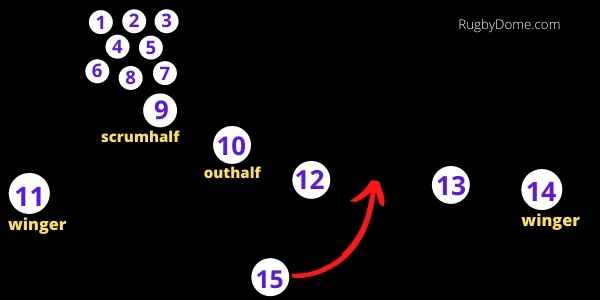
When the inside centre (12) receives the ball, he will act as if he’s about to throw a long pass out to the 13. The defending players shift to their left to cope with this wide attack.
However, the fullback (15) sprints forward to take a short pass from the 12 and go through the gap.
This is a classic play that shouldn’t work at elite professional level (because defences are too good). But the principle remains the same as phases continue and the defensive line starts getting a bit ragged.
Ball carriers
When fullbacks catch a ball kicked long down the field, one of the most exciting sights in rugby is when they set off on a counter-attacking run through the opposition.
Of course, a good defensive line should be able to spread out and tackle the fullback before they get too far.
You will often see the fullback step toward defenders and accelerate into contact. Their goal is to be strong enough to hold onto the ball in the tackle and push the tacklers back a step before they hit the ground.
What’s the point? An extra half-second can allow their teammates to reach them and form a ruck.
If you’re not sure what that is, check out our beginner article on rucking in rugby.
This role means that fullbacks should be strong ball carriers. However, they need to balance this with their ability to leap athletically to catch high balls.
Fullbacks are actually some of the lighter players in the team.
This graph from the elite professional competitions in Europe shows that fullbacks are only heavier than the outhalf (flyhalf) and scrumhalf.
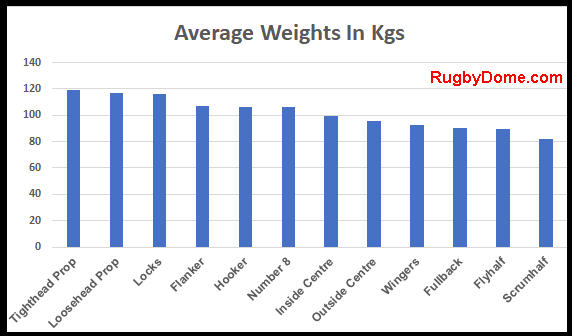
If you want more details on player weights, check out our article on how heavy rugby players tend to be.
Tackling is relatively rare
This graph shows the number of tackles made at each position in the 2021 Six Nations.
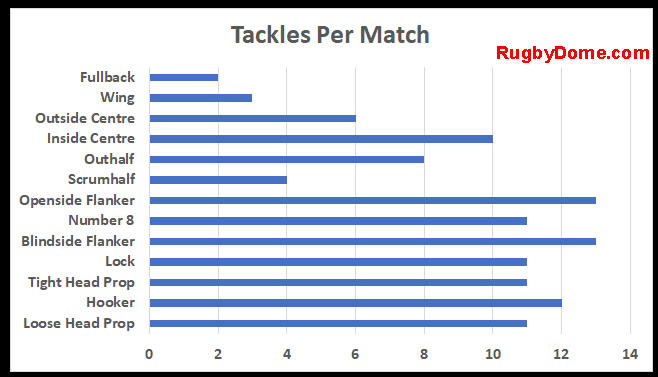
As you can see, fullbacks make the fewest amount of tackles! You can check out the actual numbers in our article on how many tackles players make per position.
I’ll say here that fullbacks make an average of two tackles per match. For perspective, an inside centre makes ten.
Fullbacks are still vital in defence
Despite the low number of tackles, fullbacks play a vital role in defence.
They must work with their two wingers to cover the large space behind their teammates in the backline. A good fullback cuts off this space, and this itself is a crucial part of defence.
The other point is that a good defensive line means that opposition players don’t breach it to race with the ball toward the try line!
If the fullback is making a tackle, it’s often a last-ditch try-saving effort.
The Back Three
Collectively, the fullback and two wingers on a team are known as the back three. They are players positioned furthest in the back field.
The trio must work together in defense and attack. Now that you understand the various roles of fullbacks, check out our article on the wingers in rugby union.
Other Positions
Our general overview of positions in rugby has links to in-depth articles for each playing position.